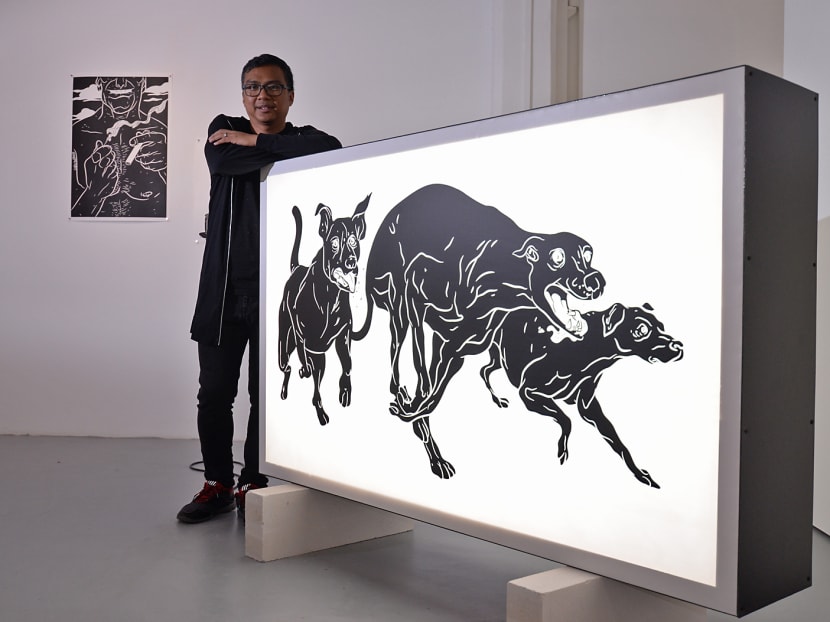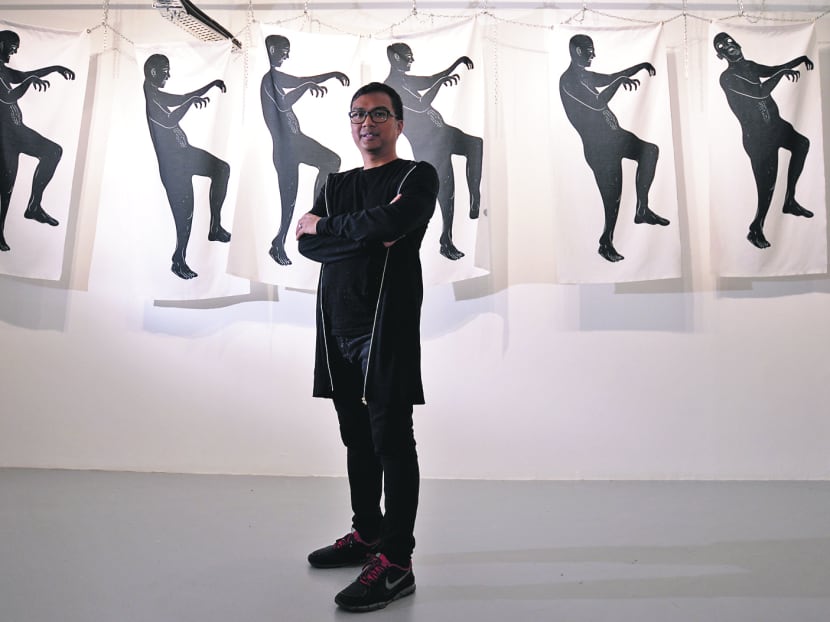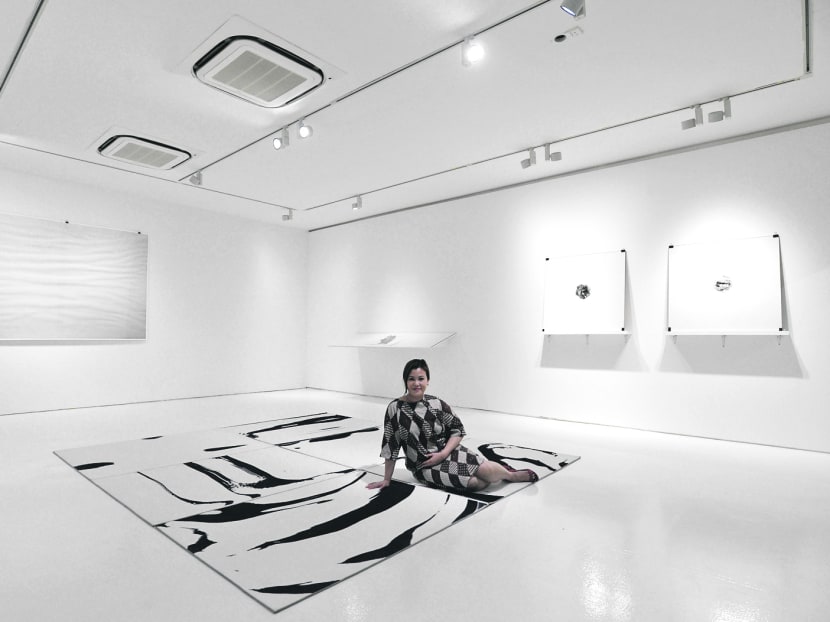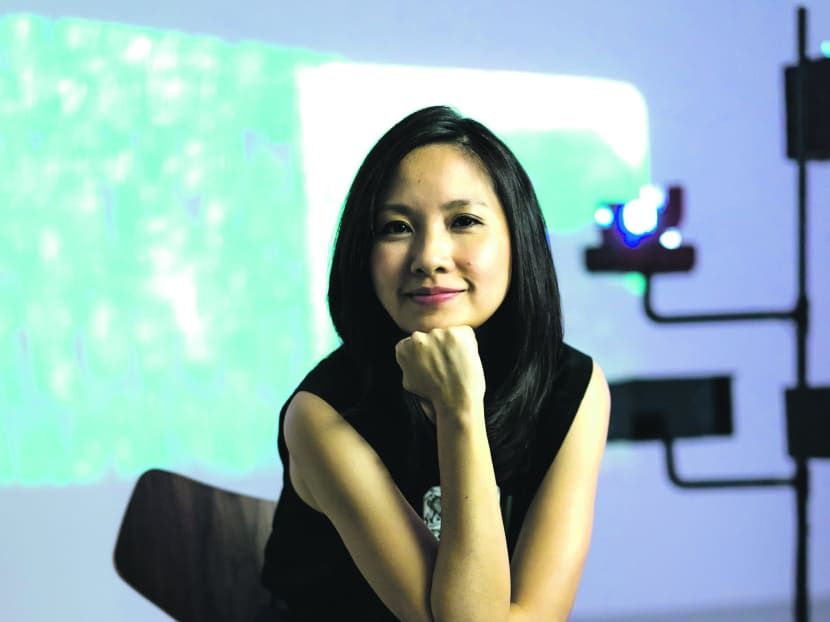Gillman Barracks now a hotbed of local contemporary art
SINGAPORE — Arts enclave Gillman Barracks has become home to Singapore’s hottest local contemporary art galleries, with Chan + Hori Contemporary the latest to move into Block 6, across from Creamier cafe.




SINGAPORE — Arts enclave Gillman Barracks has become home to Singapore’s hottest local contemporary art galleries, with Chan + Hori Contemporary the latest to move into Block 6, across from Creamier cafe.
As the new kid on the block, Chan + Hori Contemporary — previously known as Chan Hampe Galleries when it was located at Raffles Hotel Arcade — is not shying away from showcasing contemporary young Singaporean artists. Its debut exhibitions at Gillman Barracks, on until April 2, are a crop of works by local artists Joo Choon Lin and Muhammad Izdi.
Chan + Hori Contemporary is not the only gallery pushing emerging local art in the area. Located behind Creamier, Fost Gallery is currently showcasing works by Singaporean photographer Nguan, who famously took over The New Yorker photo department’s Instagram account for one week in August 2016, uploading pastel-hued visuals of daily life in Singapore.
Fost Gallery neighbour Yeo Workshop is also big on local art, and will present Fyerool Darma’s second solo exhibition later in the year. Darma is a young artist who has been on show at major contemporary art platforms such as the Singapore Biennale in 2016, and the annual contemporary art fair, Art Stage 2017.
According to Dexter How, associate vice president and Christie's Asia specialist for South-east Asian Art at art auction house Christie's Singapore, there is demand for pieces from Singapore’s young contemporary artists.
“Works by pioneering Singapore Nanyang artists have always been sought after," he noted. But Singapore’s "young contemporary artists are also coming up in the market", he said, citing names such as Ruben Pang, David Chan, and Jolene Lai.
In 2015, Christie’s became the first international auction house to hold a sale focused on Singapore art. Organised in Hong Kong, the sale was a huge success, with 93 per cent of the lots on offer sold, bringing in a total of nearly HKD37 million (S$6.6 million).
Evolving local contemporary art
“More Singaporean art galleries have been showing at international art fairs, allowing them to promote our local artists in a global arena,” said How. “This ... has also meant that Singaporean art has taken cues from art all over the world, moving away from a visual representation of local scenes to take on other subjects and conditions that affect the country, and even the rest of the world.”
Audrey Yeo, founder of Yeo Workshop, said that through representing a mix of local and international artists, the gallery tries to “create an international community that allows cross-cultural interactions and dialogues for creative processes, materials, practices and audiences”.
Chan + Hori Contemporary is currently working on a collaboration to present emerging Singapore artists in Berlin in September, in an event running alongside Berlin Art Week, which welcomed 100,000 visitors in 2016. Meanwhile, Fost Gallery facilitated a collaboration between Singapore-based street artist Rajesh Kumar and Belmond Ltd’s sleeper train, the Eastern & Oriental Express.
The exterior of two carriages on the luxury train now show commissioned pieces from Kumar. Titled Art In Motion, the pieces will remain on the train — which makes two- and three-night journeys between Singapore and Bangkok — until April 28.
Talenia Phua Gajardo, director of The Artling, an online resource for Asian contemporary art, said: “In general, I think local galleries and artists have been very active in establishing visibility locally and overseas over the last few years, which is a very positive thing.” According to her, contemporary art has evolved both locally as well as globally.
“We are seeing many artists now experimenting with technology and new media. For example, digital and interactive works, in which viewers themselves become part of the work and/or physically interact with the work. The act of ‘consuming’ artwork as such has also evolved,” she added.
Going beyond showcasing artworks
Stephanie Fong, founder of Fost Gallery, said that working with young Singaporean contemporary artists was the original mission of the gallery when it was established in 2006. She noted with pleasure that the scene is now more developed, and that many more galleries are showcasing contemporary Singapore artists’ works.
The gallery is into its 10th year, and has shown works by more than 40 local artists.
In addition to exhibitions, Fost Gallery usually hosts an artist’s talk at each exhibition, offering further insight into each showing.
“Last year, our most-attended talks were by (local artist) Heman Chong and (acclaimed local photographer) John Clang, where there was standing room only. Heman spoke about his last 10 solo exhibitions, many of which were held outside Singapore. John Clang is based in New York City, and the talk was a great opportunity for the audience in his home country to connect with him,” she said.
Named one of Asia’s best art galleries in 2013 by Blouin Artinfo, Fost Gallery also published the book From Bukit Larangan to Borobodur: Recent Drawings by Jimmy Ong 2000-2015, written by respected Singapore art historian T.K. Sabapathy.
“It is the first major publication on the renowned artist. We also launched this publication in Indonesia in August 2016, and received a rapturous response,” Fong said.
Yeo Workshop, founded in 2013, prides itself on providing young, emerging creatives with a platform to gain exposure through solo exhibitions, publications and artist talks.
Local artist Stephanie Jane Burt, who showed works at Singapore Art Week 2017 and curated an exhibition at the Institute of Contemporary Arts Singapore in February 2017, had her first solo exhibition, O Dear What Can The Matter Be, in September last year at the gallery.
Fyerool Darma’s upcoming second solo exhibition at Yeo Workshop will also be the curatorial debut of Arivan Kanaga, a young Singaporean arts enthusiast who was given the opportunity to curate the exhibition, based on him writing about the works in personal emails to the artist.
Yeo admitted that pushing for an awareness of local talent does not always lead to immediate quantitative outcomes, such as sales.
“Engagement in art is a long-term investment, and the most constant indicator of increased awareness and interest is enquiries about the artists and their work,” she said.
Khairuddin Hori, curatorial director at Chan + Hori Contemporary, said that in order for galleries to continue raising the profile of emerging local artists, there must be support and partnerships with larger institutions such as national museums and art centres.
“As private entities, there is (actually) no compulsion for local art galleries to engage and raise the profile of local artists,” he said. “As with other businesses, galleries also need to find an operational balance, and edge towards profitability.”
He added that presenting and profiling artists and artworks is only one facet of gallery work.
“Responsible galleries put in a lot of resources to add value through mentorship, curating, and project management as well as patron cultivation — which is not much different from museums and art centres,” he said.





